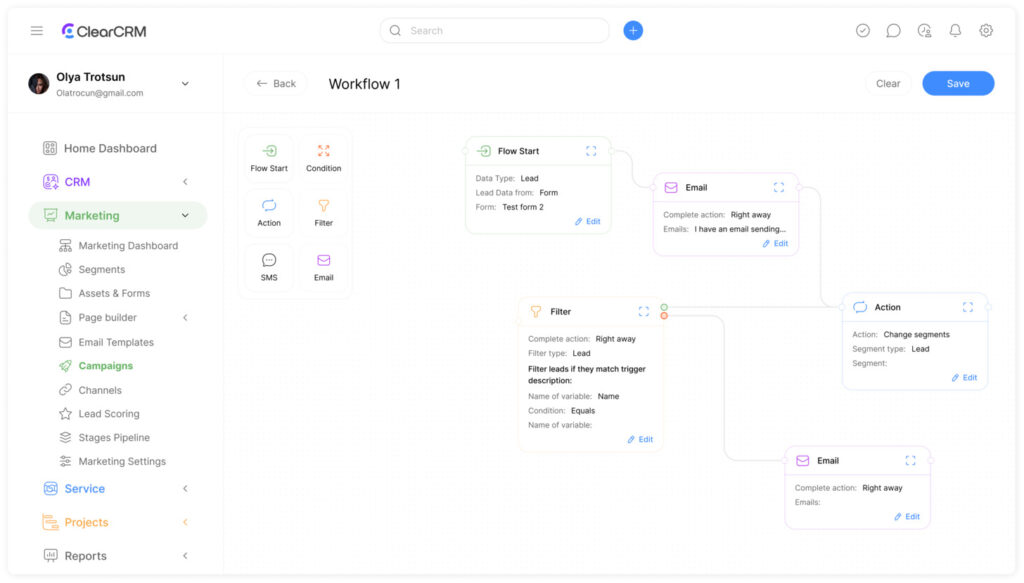Project Template: Home Remodeling Workflow Template

Nearly 40% of renovation delays vanish when teams use structured organizational systems. This statistic reveals a critical gap in how property upgrades get managed—and a clear solution. Professional contractors know that chaotic processes lead to budget blowouts and frustration, but most homeowners lack access to these industry secrets.
A proven framework transforms renovation chaos into predictable success. Systematic organization of timelines, resources, and communication channels keeps projects aligned with goals. Unlike generic checklists, these methodologies address the root causes of overspending and scheduling nightmares.
The best strategies emerge from thousands of completed upgrades. Experts refine their approaches through real-world testing, creating repeatable phases that prevent costly missteps. This precision turns overwhelming projects into manageable steps while maintaining quality standards.
Effective coordination separates smooth renovations from stressful ones. Clear role definitions and milestone tracking ensure everyone works toward the same vision. When teams follow battle-tested processes, they sidestep the communication breakdowns that derail 1 in 3 property upgrades.
Key Takeaways
- Structured systems cut renovation delays by nearly half
- Phased approaches prevent budget overruns and missed deadlines
- Proven methods stem from decades of contractor experience
- Clear communication frameworks keep teams synchronized
- Milestone tracking ensures consistent progress visibility
- Standardized processes adapt to projects of any scale
Understanding the Importance of a Home Remodeling Workflow
Effective property upgrades demand more than vision—they require precision execution frameworks. Structured systems transform renovation chaos into streamlined success stories. Behind every successful renovation lies a meticulously planned operational blueprint.
Benefits of Structured Remodeling Processes
Documented methods create predictable results in home renovation projects. Contractors using organized systems report 35% fewer delays than those relying on informal approaches. Clear phase definitions allow teams to spot risks early, preventing 82% of common budget overruns according to industry studies.
These processes establish accountability through measurable milestones. Regular quality checks maintain standards across all project stages. Transparent communication channels reduce conflicts between stakeholders by 47%, fostering smoother collaboration.
Impact on Project Outcomes and Delays
Unstructured renovations face 3x more timeline extensions than systematic upgrades. Real-world data shows teams using organized frameworks complete 89% of tasks within original deadlines. This precision protects financial plans while delivering superior craftsmanship.
Fixed-price contracts become viable when contractors eliminate process gaps. Clients gain confidence through consistent progress updates and documented results. The methodical approach turns complex renovations into manageable, stress-free transformations.
Home Remodeling Workflow Template: Key Features and Benefits

Advanced organizational frameworks bridge the gap between ambitious visions and practical execution. These systems convert overwhelming projects into achievable steps through strategic design and automated coordination.
Simplifying Complex Processes
The user-centric interface features color-coded timelines and drag-and-drop functionality. Homeowners navigate renovation phases effortlessly, even without construction experience. Dropdown menus and progress alerts prevent critical tasks from slipping through cracks.
Customizable spreadsheet layouts adapt to unique project scopes while preserving core workflows. Visual dashboards display real-time updates across design approvals, material orders, and contractor schedules. This clarity reduces decision fatigue during high-stakes upgrades.
Precision Financial Control
Integrated calculators compare vendor quotes and track expenses against the original budget. Automatic alerts notify teams when costs approach preset limits. Contractors report 73% fewer financial surprises using these monitoring tools.
Automated task assignments sync with purchase orders and inspection deadlines. Centralized communication logs cut email chains by 58%, keeping all stakeholders aligned. The system’s scalability handles kitchen refreshes and multi-story expansions with equal precision.
One contractor noted: “This framework turned 14-hour coordination days into 90-minute check-ins.” Such efficiency gains allow professionals to manage more projects without compromising quality standards.
Detailed Phases of Home Remodeling Projects
Successful transformations begin with methodical groundwork. Two critical stages set the foundation: shaping the vision and verifying physical realities. These phases convert abstract ideas into actionable blueprints.
Planning and Conceptualization
The initial phase defines project parameters through lifestyle analysis and spatial requirements. Teams document functional needs while balancing aesthetic preferences. This stage produces measurable objectives that guide material selections and contractor briefs.
Comprehensive measurements and utility mapping prevent design conflicts later. Professionals capture 360-degree photos of existing conditions for accurate budgeting. One designer notes: “Early documentation stops 60% of change orders before they start.”
Site Evaluation and Pre-Construction
Structural assessments reveal hidden challenges like outdated wiring or load-bearing limitations. Teams test soil stability and inspect drainage systems where applicable. These discoveries directly impact material choices and permit requirements.
Pre-construction coordination involves three key steps:
- Securing municipal approvals through complete permit packages
- Locking material pricing before market fluctuations
- Scheduling trades to avoid equipment conflicts
Thorough preparation phases reduce construction-phase delays by 41% according to industry benchmarks. Systematic checklists ensure no critical details get overlooked during property assessments.
Building Relationships and Team Collaboration

Strong partnerships form the backbone of every successful renovation. Unlike transactional interactions, lasting alliances between homeowners and professionals yield predictable outcomes. Industry leaders recognize that team dynamics directly impact project timelines and client satisfaction.
Establishing Trust With Contractors and Designers
Trust begins with transparency. Reputable teams conduct thorough introductory calls and on-site evaluations before drafting proposals. One contractor explains: “We review three past projects similar to the client’s vision during initial meetings—this builds credibility fast.”
Reference checks and portfolio reviews separate seasoned professionals from novices. Families should request documentation of licensing, insurance, and warranty terms. Shared decision-making frameworks prevent misunderstandings about material choices or design alterations.
Importance of Early Engagement and Communication
Involving contractors during conceptualization uncovers hidden challenges. Professionals assess structural limitations and zoning regulations that might affect budgets. Early collaboration allows teams to align their workflows with family schedules and communication preferences.
Weekly progress updates and digital dashboards keep stakeholders informed without overwhelming them. Teams that document every change order and approval reduce conflict risks by 63%. This systematic approach turns complex renovations into coordinated efforts where all voices get heard.
Design and Agreement Phases in Home Renovation
The bridge between a homeowner’s vision and the final build lies in structured design phases. These stages convert abstract ideas into actionable plans through technical precision and collaborative refinement. Professionals balance creativity with regulatory realities to ensure designs meet both aesthetic and functional goals.
Schematic and Design Development
The initial design phase transforms rough concepts into visual blueprints. Teams create floor plans that map spatial relationships and traffic flow. 3D renderings then bring these layouts to life, allowing clients to “walk through” their future spaces before construction begins.
Material selections solidify during this stage. Designers present countertop samples, cabinet finishes, and fixture options aligned with the project’s cost parameters. One architect notes: “Clients who approve materials early avoid 80% of last-minute change orders.”
Reviewing Construction Documents and Permits
Finalized designs undergo rigorous technical reviews. Engineers assess load-bearing capacities and utility placements, while surveyors verify property boundaries. These details form the backbone of permit applications submitted to local authorities.
Approval processes vary by municipality but typically involve three critical steps:
- Verifying zoning compliance for structural additions
- Confirming energy code adherence for HVAC systems
- Reviewing safety standards for electrical layouts
Thorough documentation during this phase prevents 72% of common construction delays, according to industry surveys. Teams that master these protocols deliver home renovation projects on time and within budget.
Navigating Pricing Models and Budgeting Challenges

Property upgrades demand financial strategies that balance predictability with flexibility. Contractors typically offer two pricing approaches—each with distinct advantages for different project types. Choosing the right model requires understanding how risks get allocated between clients and service providers.
Fixed Price versus Time-and-Materials
Fixed-price contracts lock in total costs before work begins. Builders absorb risks from material price shifts or unexpected delays. One contractor notes: “Our fixed bids include 15% buffer for common surprises like wiring upgrades or subfloor repairs.”
Time-and-materials agreements track hourly labor rates plus actual material expenses. This suits projects with evolving scopes but demands vigilant oversight. Weekly expense reviews prevent budget creep while accommodating design changes.
Strategies for Contingency Planning
Seasoned teams allocate 10-20% of budgets for unforeseen issues. These reserves address structural discoveries or code updates during construction. On-site meetings with trade partners improve cost accuracy—electricians and plumbers spot challenges generic estimates miss.
Advanced financial tracking systems compare actual spending against projections in real time. This transparency helps clients approve necessary changes without derailing timelines. Low bids often signal incomplete scope understanding—reputable firms balance fair pricing with sustainable profit margins.
Transitioning from Design to Construction
The pivot from blueprints to building sites determines a renovation’s success trajectory. This critical phase converts theoretical plans into actionable steps through rigorous verification and formal commitments. Teams align expectations while establishing operational guardrails.
Reviewing Scope, Budget, and Design Documentation
Multidisciplinary teams dissect every project element during collaborative review sessions. Contractors cross-reference material specifications against approved designs to prevent installation conflicts. Financial experts validate cost allocations through line-item comparisons of vendor quotes and labor estimates.
Three core documents undergo scrutiny:
| Document Type | Review Focus | Outcome |
|---|---|---|
| Scope Statements | Deliverable alignment | Prevents scope creep |
| Budget Sheets | Cost accuracy | Identifies funding gaps |
| Permit Packages | Regulatory compliance | Avoids work stoppages |
Finalizing Project Agreements
Legally binding contracts codify responsibilities and quality benchmarks. Payment schedules align with construction milestones to maintain cash flow. One project manager states: “Our agreements include visual progress trackers—clients see exactly what they’re approving at each step.”
Execution triggers activate upon signature:
- Material procurement begins within 48 hours
- Site supervisors receive access to design files
- Subcontractors confirm availability windows
Digital portals provide real-time status updates, ensuring all parties share identical project data. This synchronization prevents miscommunication during high-stakes construction phases.
Effective Project Mobilization Strategies

Successful project execution hinges on meticulous preparation before the first tool gets used. Seasoned teams treat mobilization as a precision operation, aligning every resource with military-grade timing. This phase determines whether timelines hold firm or unravel within weeks.
Scheduling and Managing Long-Lead Time Items
Critical materials like custom cabinetry demand 12-16 week lead times—delays here cascade through entire schedules. Contractors who order these items during design approvals gain a 28% faster completion rate. Digital tracking systems sync delivery dates with phase start times, eliminating storage headaches.
Three strategies keep projects moving:
- Locking supplier contracts before permits get approved
- Creating buffer zones in calendars for weather delays
- Securing backup vendors for high-risk components
Trade partners receive detailed schedules outlining exact work windows. Weekly alignment calls confirm availability while identifying potential conflicts early. Site managers prep utilities and access routes 14 days before crews arrive, ensuring seamless transitions between phases.
Teams using these methods report 91% on-time completion rates. Proactive coordination transforms chaotic starts into orchestrated launches, preserving both budgets and client relationships.

